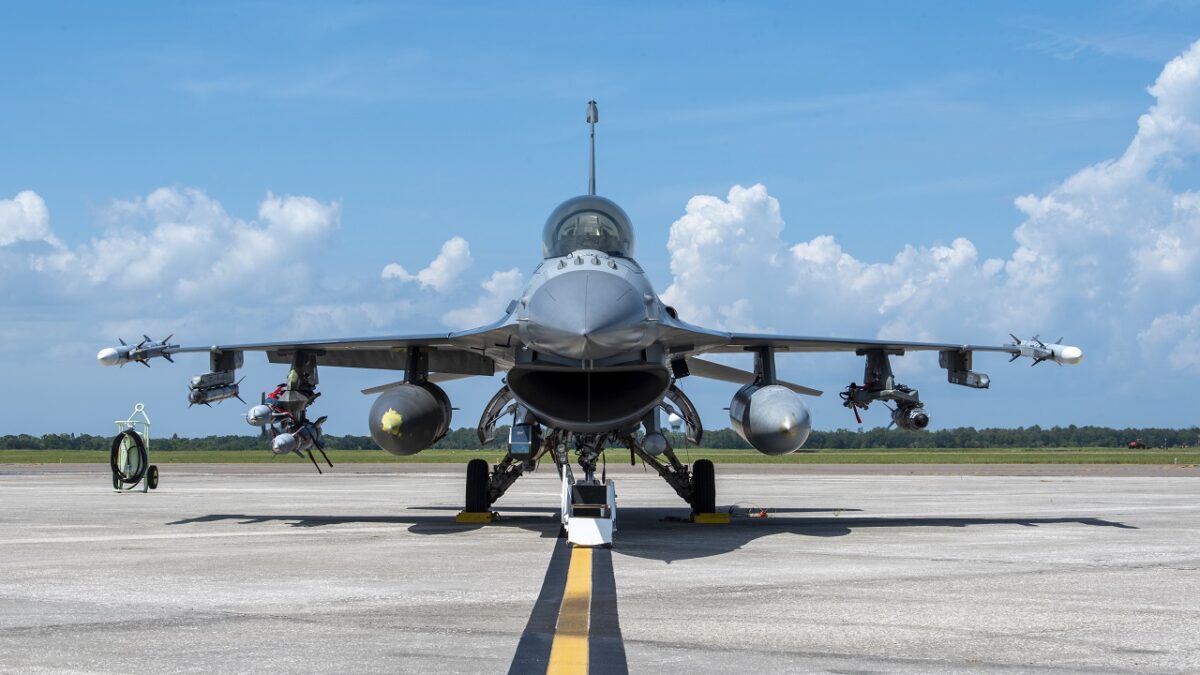The F-35 is the best fighter jet any nation can buy today – but doesn’t come cheap. So what if your nation is friendly with the United States and can’t fork over F-35-level dollars? Well there is always the F-16:
There are approximately 3,000 operational F-16 Fighting Falcons in service today for 25 countries. That number is a true testament to what is easily the most successful, combat-proven multi-role jet fighter ever produced. Since entering service in 1979, this warbird has been tested repeatedly in battle, engaging in more than 400,000 combat sorties. It has a combined 19 million flight hours.
The F-16 has also been adapted to complete a number of missions, including air-to-air fighting, ground-attack, and electronic-warfare. As a combat fighter, the F-16 has proven to be highly maneuverable, while its combat radius exceeds that of its potential adversaries. And the fast, agile F-16 Fighting Falcon is not just one of the top fighters – it is also among the most cost-effective. The F-16 design incorporated the most advanced aerospace science. Proven reliable systems from other aircraft such as the F-15 and F-11 were combined to keep the F-16 simple, reducing its size and purchase price, as well as its maintenance costs and weight.
Though it lacks the range and payload of the larger twin-engine F-15 Eagle, the Fighting Falcon actually costs less than half as much to make. This is why the fourth-generation F-16 has been in use since the 1970s and will probably keep flying for many years to come.
New Operators
Enter the F-16 Block 70/72. This variant combined a number of capability upgrades, most notably the advanced Active Electronically Scanned Array radar with its new avionics architecture. Critical upgrades extended the structural life of the aircraft by more than 50% beyond previous F-16 aircraft. In addition, the F-16 Block 70 software takes advantage of technologies not available when earlier Block F-16s were developed and produced.
Block 70/72 is now the most expensive F-16 variant, yet still only costs about $63 million per unit. The exact price charged per F-16 largely depends on the plane’s variant, the country buying it, and when it is bought. Among the buyers of Block 70 is the Bulgarian Air Force, which is procuring eight new F-16 Block 70 aircraft. Sofia has shown interest in purchasing eight additional aircraft to build its fleet and capabilities.
Turkey is also looking to buy upwards of 40 Block 70 aircraft, as well as modification kits, in a deal that is reportedly worth $6 billion. In June, it was announced that the Hashemite Kingdom of Jordan officially signed a Letter of Offer and Acceptance for the sale of eight new-production American F-16 Block 70 fighter jets.
Looking to the F-16’s Future
Currently, much focus is on the F-16 Viper Block 70 models, whose structural and capability upgrades ensure the international F-16 fleet can operate to 2060 and beyond. The eventual Block 80 could truly be greatest version to take to the skies.
So far, there are no solid updates on what such an enhanced model could entail, but it could well incorporate some advanced capabilities that allow it to interoperate with fifth-generation fighters including the F-35 and the F-22.
It would almost certainly build on the F-16V, which was unveiled at the Singapore Airshow in February 2012. The Viper configuration is available as a new-production aircraft, while a components upgrade is also being offered for existing F-16 versions. This upgrade might include the F-16V’s advanced glass cockpit, which incorporates an upgraded mission computer and state-of-the-art avionics, including color multi-function displays, a large high-resolution center pedestal display, a helmet-mounted cueing system, and a high-volume, high-speed data bus.

A U.S. Air Force F-16 Fighting Falcon aircraft sits parked on flight line at MacDill Air Force Base, Sept. 8, 2021. (U.S. Air Force photo by Airman 1st Class Lauren Cobin).
The F-16 Viper is further equipped with upgraded electronic warfare equipment and modern threat warning systems including jammers, threat warning receivers, electronic countermeasures equipment pods, and chaff and infrared flare dispensers. It could be armed with a range of air-to-air missiles, including AIM-9 Sidewinder, Magic II and ASRAAM short-range missiles, as well as AIM-7, Sky Flash, and AIM-120 medium-range missiles.
While the F-16V Block 80 might not be a fifth-generation aircraft, perhaps it could be the next best thing – especially for nations that have a limited budget.

U.S. Air Force 52nd Fighter Wing F-16 Fighting Falcons line up in formation on the runway for a show of forces display at Spangdahlem Air Base, Germany, Oct. 1, 2019. The 52nd FW has a suppression of enemy air defenses mission and must be able to respond to emerging competitors. (U.S. Air Force photo by Staff Sgt. Joshua R. M. Dewberry)
Expert Biography: A Senior Editor for 1945, Peter Suciu is a Michigan-based writer who has contributed to more than four dozen magazines, newspapers, and websites with over 3,000 published pieces over a twenty-year career in journalism. He regularly writes about military hardware, firearms history, cybersecurity, and international affairs. Peter is also a Contributing Writer for Forbes.

